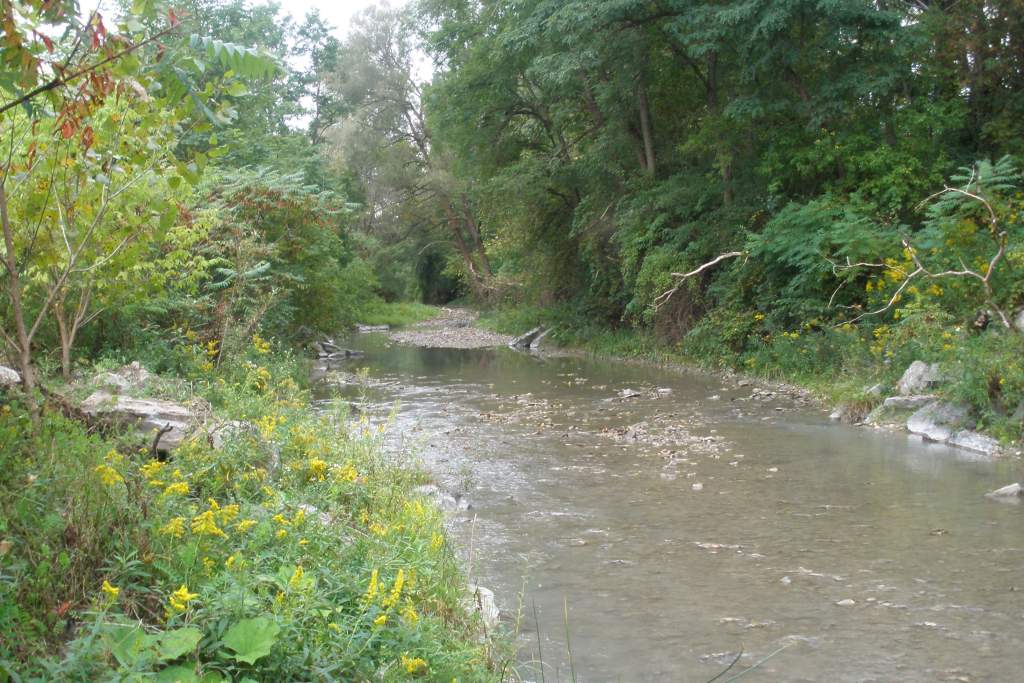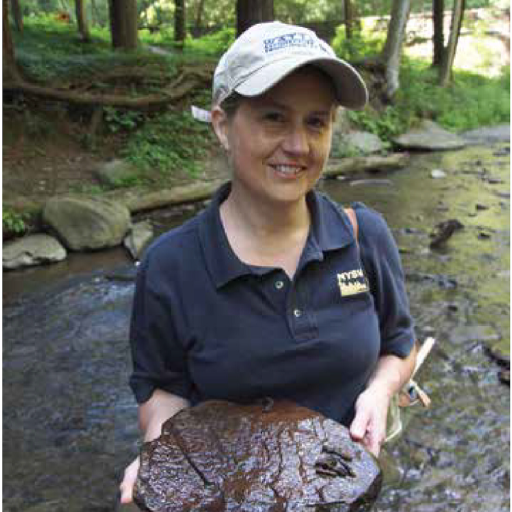Volunteer with NYSDEC’s WAVE Program
April 28, 2017
Virginia Ursitti, Watts’ Senior Environmental Scientist, volunteers with the NYSDEC WAVE Program which is an important part of the effort to assess the health of our streams in New York State. Learn a bit about the program and how YOU can help.
NYSDEC’s WAVE program (Water Assessments by Volunteer Evaluators) trains citizen-scientists to collect samples of “benthic macroinvertebrates” from wade-able streams and rivers in NY State. (“Macroinvertebrate” refers to tiny animals without an internal skeleton. They are small but can be seen with the naked eye. “Benthic” refers to their location at the bottom of a stream or lake.) The program is an important part of the effort to assess the health of our streams in New York State.
Since the macroinvertebrates are so very small and so well camouflaged, the trick to observing them is to kick the sediments and stones into a net, place the net’s contents into a white bucket, and sift through to pick out the living things. Even having some working knowledge about this area of environmental science, I was truly amazed to see so many creatures concentrated in such a small volume of sediment! We then isolate the creatures in white ice cube trays and identify them using a 10x magnifier. Most of the macroinvertebrates are insects, bivalves, snails, or worms in an early stage of development, when they are living and feeding in the silt or gravel stream bottom.
Pollutants typically concentrate at the stream bottom, so the health of a stream is evaluated based on the variety and type of tiny animals kicked up from the sediments during a sampling event. There are many insect species in the mayfly, stonefly, and caddisfly families, for instance, that are very pollution sensitive. They are the species found in prized trout streams, and are the models for the age-old practice of “tying flies” for fly fishing. Finding a variety of these species in their larvae and nymph stages typically indicates a healthy stream.
Other types of macroinvertebrates include larvae and nymphs of dragonflies, midges, beetles, snails, worms, clams, mussels, and crayfish, among others. Some of them are more or less pollution tolerant, and finding a preponderance of those, as well as less variety overall, may indicate a stream that is more polluted and is not so healthy because it doesn’t support the diversity of species needed for a healthy ecosystem.
When sampling is complete, WAVE volunteers collect one of each different type of invertebrate animal preserved in a small sample bottle, along with a checklist describing the stream characteristics and surrounding land use observed during sampling. The sample and the checklist are sent to the NYSDEC for professional evaluation.
I most appreciate that this program is flexible, providing an opportunity for people without a lot of extra time to actively help protect the streams most important to them. You choose the sampling location, which (after NYSDEC’s approval) can be at the time and place that is convenient for you. After a day of training, WAVE volunteers can spend as little as one day a year or as many as they like, collecting biological data to help NYSDEC assess thousands of miles of streams in our beautiful State. It’s all up to you! For more information on WAVE, visit:
www.dec.ny.gov/chemical/92229.html
Note: Collecting macroinvertebrates without authorization is against the law. If you have wondered what lies beneath the rocks and mud of our streams, WAVE gives you an opportunity to learn more about them.

